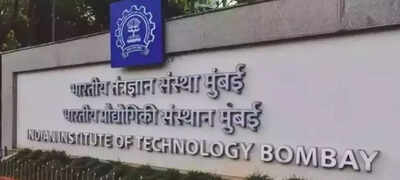ARTICLE AD BOX

For the first time in recent years, the number of students admitted to the Indian Institutes of Technology (IITs) has gone beyond the official intake. According to the Joint Implementation Committee (JIC) report for 2025, while the sanctioned capacity across 23 IITs stood at 18,160 seats, a total of 18,188 seats were allotted in the final round — an excess of 28.This unusual jump is visible in some of the country’s top campuses. IIT Bombay admitted 1,364 students against its sanctioned capacity of 1,360, IIT Delhi 1,241 against 1,239, and IIT Kharagpur 1,923 against 1,919. IIT Kanpur overshot by five, admitting 1,215 students compared to its 1,210-seat capacity, while IIT Madras allotted 1,124 against 1,121. On the other hand, IIT (BHU) Varanasi admitted one student fewer than its intake of 1,589.
A trend of full utilisation, but also over-admission
The increase comes against the backdrop of steady expansion in IIT capacity. Last year, 17,760 seats were on offer, of which 17,695 were filled. This marked a rise of nearly 375 from the 17,385 seats available the year before. The only year when all IIT seats were filled without overstepping capacity was 2019.Officials explain that this year’s “excess” is the result of the Joint Seat Allocation Authority (JoSAA) system, which seeks to minimise vacancies by balancing late withdrawals with provisional over-allotments.
The approach ensures that premier institutions do not end up with empty seats, but it also raises questions about whether infrastructure is keeping pace with the rising student intake.
Where the numbers went up
Among the 23 IITs, at least seven admitted more students than their sanctioned capacity. IIT Kanpur saw the sharpest increase with five extra admissions. IIT Bombay and IIT Kharagpur followed, exceeding by four each. IIT Roorkee, IIT (ISM) Dhanbad and IIT Madras admitted three more students each than their official intake.
Smaller campuses such as IIT Tirupati and IIT Dharwad also saw an additional admission each.The aggregate shows 18,188 admissions against 18,160 sanctioned seats. Alongside, nine supernumerary Defence Service (DS) seats, 11 for foreign nationals/Overseas Citizens of India (OCI)/Persons of Indian Origin (PIO), and 12 under minimum cut-off relaxations were allotted.
Infrastructure push and gender representation
The government has already announced plans to expand IIT capacity further.
In the 2025 Union Budget, it committed to creating infrastructure to accommodate an additional 6,500 students across five newer IITs — Palakkad, Dharwad, Jammu, Bhilai, and Tirupati, over the next five years. These seats will primarily be at the undergraduate level.Meanwhile, representation of women in IITs has seen marginal improvement. Out of the 18,188 admissions, 3,664 are women, accounting for 20.15% of the total.
Institutes such as IIT Tirupati (21.57%), IIT Roorkee (20.50%) and IIT Madras (21.09%) performed above the national average, aided by the supernumerary quota for female candidates.
A competitive pool
The scale of demand continues to be intense. A total of 2,58,765 candidates registered for JoSAA 2025, filling more than 33 crore choices. Of the 51,216 students who qualified JEE (Advanced) this year, 73 lakh choices were locked.For aspirants, the overshooting of sanctioned seats reflects the system’s attempt to accommodate every possible candidate within the IIT framework. For the institutes, it is a reminder that the country’s most sought-after engineering colleges are running at, and sometimes beyond, capacity.TOI Education is on WhatsApp now. Follow us here.



.png)
.png)
.png)
















 1 day ago
3
1 day ago
3









 English (US) ·
English (US) ·